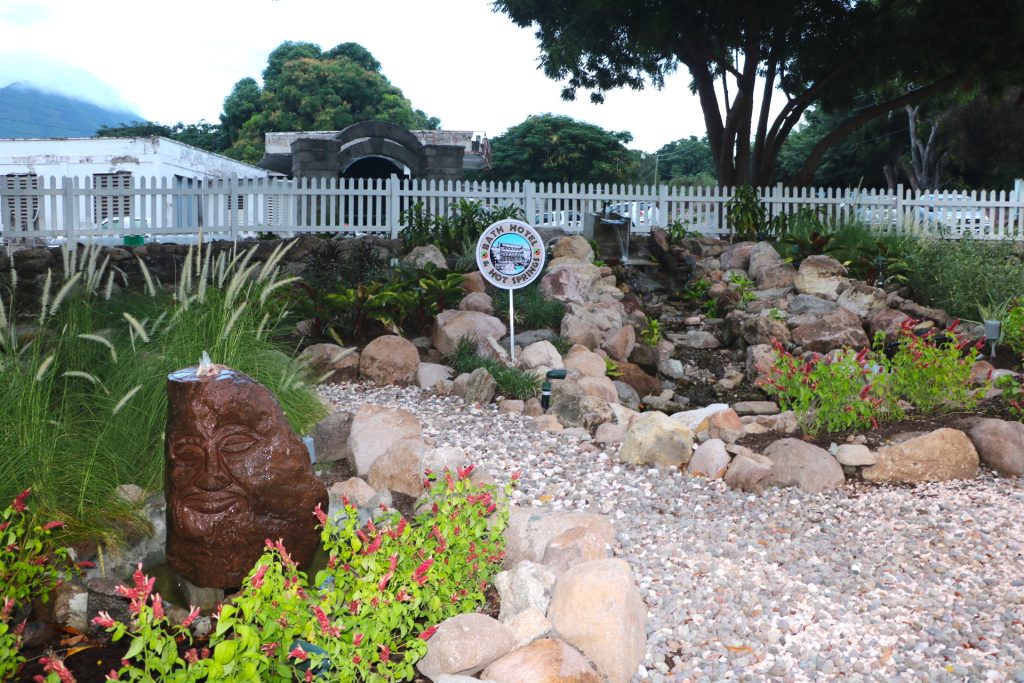Construction Guidelines and Safeguards for the Protection of Bath Hot Springs
The preservation of the Bath Hot Springs in Nevis, a site of significant historical and ecological value, necessitates a comprehensive policy framework to mitigate the potential adverse effects of construction and development activities on its geothermal integrity. This policy aims to safeguard the natural flow, temperature stability, and ecological balance of the hot springs by establishing stringent guidelines for construction within a designated protective buffer zone. The policy’s scope encompasses all forms of construction, land development, excavation, and infrastructural projects within the defined buffer zone, ensuring a holistic approach to preserving this valuable natural resource.
Central to the policy is the establishment of a protective buffer zone surrounding the Bath Hot Springs. A minimum 100-meter no-construction zone will be strictly enforced around the primary spring outlets and geothermal pools. This zone serves as a sanctuary for the delicate geothermal system, allowing only approved heritage preservation activities, light landscaping, and essential maintenance. The restricted nature of activities within this zone aims to minimize human-induced disturbances that could disrupt the natural geothermal flow and temperature equilibrium of the springs. This inner buffer zone effectively forms a protective shield against direct impacts from construction and development.
Beyond the immediate no-construction zone, the policy extends its protective reach with a secondary buffer zone extending to 300 meters from the hot springs. Within this secondary buffer zone, while construction is not strictly prohibited, it is subjected to rigorous assessment procedures to ensure minimal impact on the geothermal system. All development proposals within this zone must undergo a comprehensive Geothermal Impact Assessment (GIA). The GIA involves detailed hydrogeological mapping to understand the subsurface water flow patterns, spring flow and temperature impact studies to analyze potential alterations to the geothermal characteristics, and soil stability assessments to evaluate the risk of land subsidence or instability due to construction activities. This comprehensive assessment process ensures that any potential impacts on the geothermal system are thoroughly evaluated before development can proceed.
The policy further restricts deep excavation, pile driving, and underground utility installations within the 300-meter zone. These activities are of particular concern as they have the potential to disrupt subsurface geothermal pathways, alter flow patterns, and negatively impact the temperature stability of the hot springs. Such interventions are strictly prohibited unless developers can provide conclusive evidence, through rigorous scientific studies, that their proposed activities will not adversely affect the intricate geothermal system. This precautionary approach underscores the policy’s commitment to prioritizing the preservation of the hot springs over development interests where potential risks are identified.
Recognizing that some construction might be unavoidable within the secondary buffer zone, the policy mandates specific construction practices to minimize potential impacts. Foundation designs must be carefully engineered to avoid deep excavations where possible. Shallow foundations, raft foundations, or ground improvement techniques are preferred to minimize disturbance to the subsurface environment. If deep foundations are unavoidable, specialized techniques such as micro-piling or drilled piers with minimal grout injection should be employed to reduce the risk of disrupting geothermal flow paths. The policy encourages the use of environmentally friendly construction materials and methods to further minimize the overall environmental footprint of any development within the buffer zone.
The implementation of this comprehensive policy framework will require consistent monitoring and enforcement to ensure its effectiveness. Regular monitoring of spring flow, temperature, and water quality will provide essential data to track the health of the geothermal system and identify any potential impacts from nearby activities. A dedicated enforcement mechanism, with clearly defined penalties for non-compliance, is crucial to deter potential violations and ensure that all development activities within the buffer zone adhere to the established guidelines. Through diligent monitoring and enforcement, the policy aims to ensure the long-term protection of the Bath Hot Springs, preserving its unique geothermal characteristics and ecological integrity for generations to come. This holistic approach, combining proactive assessment, restrictive measures, and ongoing monitoring, establishes a robust framework for balancing development needs with the imperative of preserving this valuable natural resource.
Share this content:












Post Comment